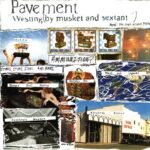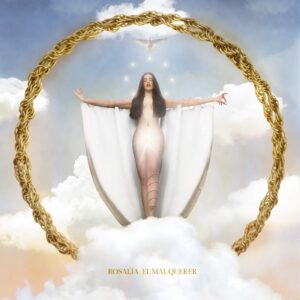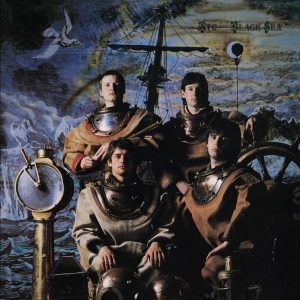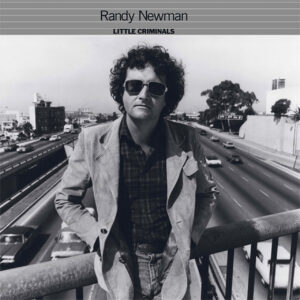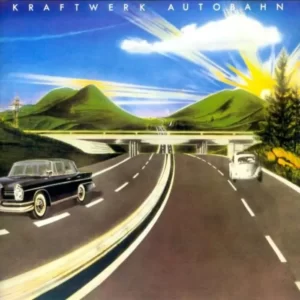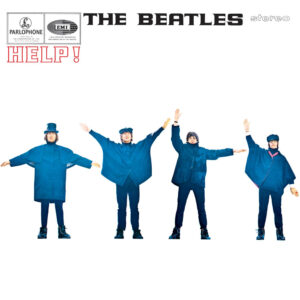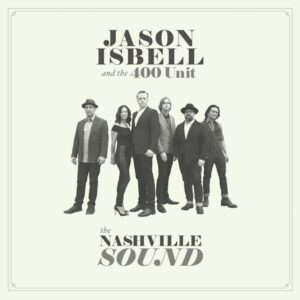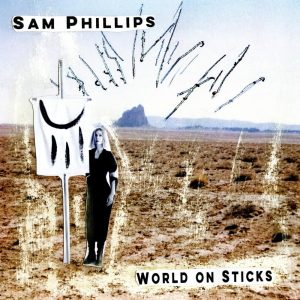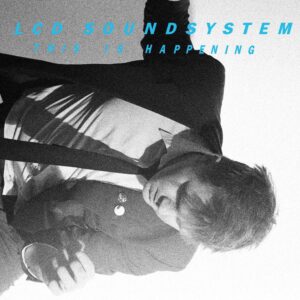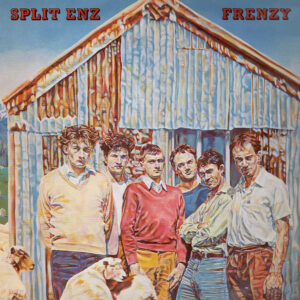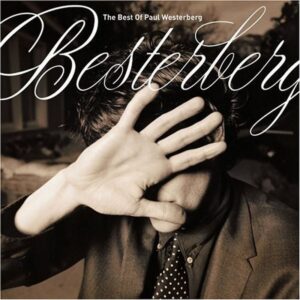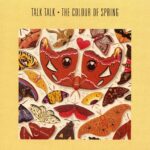
Counting Crows formed in the Bay Area. Vocalist Adam Duritz was formerly in The Himalayans, who recorded an album with producer David Bryson in 1990. The album was unreleased until 2002, but Bryson and Duritz started playing together at open mic nights, calling themselves Counting Crows.
Introduction
The duo took their name from the nursery rhyme ‘One For Sorrow’, about a superstitious counting of magpies. Duritz referenced the rhyme on the debut’s ‘A Murder of One’.
Bryson and Duritz eventually enlisted a full band. A heated bidding war for their services led to the nickname “Accounting Crows”. Filling in for Van Morrison at a 1993 Rock and Roll Hall of Fame ceremony gave the band an instant profile boost. An enthusiastic introduction from Robbie Robertson also helped. Their debut album was released in 1993, coincidentally the same year Crowded House released ‘Pineapple Head’.
It’s easy to poke holes in the Counting Crows’ reputation. Frontman Adam Duritz can be a divisive presence, as he treads a fine line between sensitive poet and asshole. Although their early albums are solid, the band have some embarrassing work in the 21st century. Most notorious is a cheeseball cover of Joni Mitchell‘s ‘Big Yellow Taxi’ with Vanessa Carlton. ‘Accidentally in Love’ from a Shrek soundtrack is another offender, and the band lost their alternative edge in the 2000s.
Counting Crows Album Reviews
August and Everything After
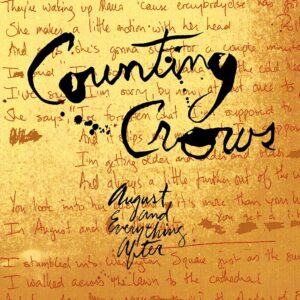
1993, 8/10
There was a lot of hype around the Counting Crows before they even made an album. As a high-profile new band, they recruited T Bone Burnett into the producer’s chair – he also contributes guitar parts.
August and Everything After finds a good balance between different musical worlds. It combines 1990s alternative angst with the rootsy sound of Van Morrison and The Band circa 1970.
It’s not perfect – it’s a ballad-heavy and slow-paced – the single ‘Mr. Jones’ is a rare boost of energy. The arrangements are pared back – Duritz takes most of the spotlight, while the rest of the band are tastefully restrained. It’s not the band’s best album, but arguably the best showcase of Duritz’s writing skills.
Duritz can be irritating, but he’s got enough personality to fuel offbeat songs like ‘Rain King’. The hidden gem is the punchy country rock of ‘Omaha’. Duritz is solo on piano on ‘Raining in Baltimore’. ‘Anna Begins’ and ‘A Murder of One’ (with its “shame, shame, shame” hook) are enjoyable deep cuts.
‘Mr. Jones’ has been somewhat overplayed, but it’s an interesting tale. The Mr. Jones is Marty Jones, bass player of Duritz’s previous band, The Himalayans. The song tells of Jones and Duritz’s desire for fame.
August and Everything After is a confident start to the Counting Crows career.
Recovering the Satellites

1996, 7.5/10
Recovering the Satellites is a quintessential difficult second album. Duritz had a nervous breakdown after the success of the debut, and it’s darker in tone. The rest of the band is more involved, with more muscle and memorable instrumental hooks. The addition of guitarist Dan Vickrey beefs up the band’s sound. The band worked with producer Gil Norton, known for his work with alternative bands like Pixies and
But it’s also a victim of that 1990s issue of albums swelling to fit a CD running time. On the second side, slow-paced, over-emotive songs like ‘Miller’s Angels’ and ‘Mercury’ outstay their welcome. A tight ten-song album would be preferable.
The best moments outshine those of its predecessor. The hard-charging ‘Angel of the Silences’ is one of my favourite Counting Crows songs, capturing an abrasive side of the band. At the opposite end of the spectrum, ‘A Long December’ is a pretty piano ballad that’s also one of the band’s best songs.
It makes sense that dark, soul-baring songs like the title track are fan favourites. But I prefer the faster-paced, more energetic songs like ‘Monkey’, about Duritz’s then-girlfriend Courtney Cox.
Recovering the Satellites is full of dark personal material, but it also has some of the band’s most accessible songs.
This Desert Life
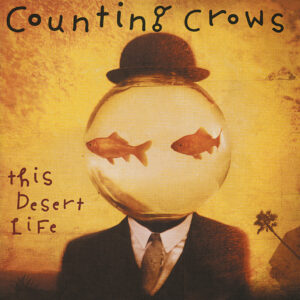
1999, 8.5/10
Counting Crows worked with producers David Lowery and Dennis Herring on their third album. Herring and Lowery had previously worked together on Camper Van Beethoven’s 1988 classic Our Beloved Revolutionary Sweetheart. They recorded together in a rented house in Angeles.
As their name implies, Camper Van Beethoven wasn’t a serious band. The sense of fun rubs off a little on the Counting Crows – there aren’t as many maudlin tracks, and a welcome bit of silliness creeps in. It’s more of a studio-based record than before. In an interview, Duritz described the lead single ‘Hanginaround’ as the most live-sounding track, but pointed out that it’s “loop after loop after loop”.
A lot of my favourite Counting Crows moments are on This Desert Life. ‘I Wish I Was A Girl’ has my favourite Duritz lyric – “They’re gonna make a movie from the things that they find/Crawling ’round my brain”. ‘All My Friends’ has a great middle eight (“can you see her?”…) lifting out of a psychedelic slow down. ‘St. Robinson In His Cadillac Dream’ has a great arrangement with mandolin and organ, framing Duritz’s scathing putdown – “I may not go to heaven/I hope you go to hell.”
‘Hanginaround’ is a great three-chord song, energetic and memorable. I also enjoy the moody, piano-based ‘Colourblind’. ‘Mrs Potter’s Lullaby’ successfully marries some Duritz introspection to a catchy tune and upbeat arrangement – it’s deservedly one of the band’s most beloved songs.
This Desert Life is the peak of the Counting Crows’ early career, and the band were never as interesting again.
Hard Candy

2002, 7/10
The early Counting Crows records were interesting because they mixed classic rock leanings with an alternative rock edge. By their fourth album, that edge has dissipated, leaving them as a retro-sounding mainstream rock band. The most egregious example is the cover of Joni Mitchell’s ‘Big Yellow Taxi’, but there’s little edge anywhere. Working with mainstream producer Steve Lillywhite probably doesn’t help.
The edge might be gone, but the songwriting is still largely intact. These are mostly succinct songs with memorable hooks, although the best tracks are when Duritz injects personality. ‘Holiday In Spain’ is the most beloved song on the record, where Duritz sings that he’ll “drink my worries down the drain/And fly away to somewhere new”. A reworked version with Dutch pop-rock group BLØF later topped the Netherlands charts.
The classic rock sound works on ‘If I Could Give All My Love -Or- Richard Manuel Is Dead’, with the sprightly dual lead guitars and funky dreaming. It showcases Duritz’s high register on the chorus and feels heartfelt. Elsewhere, it feels a little perfunctory – the single ‘American Girls’, with Sheryl Crow, needs a little more punch. It gets a little ballad-heavy in the second half.
Hard Candy has enough good songs to be worthwhile but it’s disappointingly tame.
Saturday Nights and Sunday Mornings

2008, 6/10
Like its title suggests, Saturday Nights & Sunday Mornings amalgamates two projects. Saturday Nights reunites the group with Gil Norton, who produced Recovering the Satellites. Satellites was the band’s toughest sounding record, and Saturday Nights returns to that rock-oriented sound.
Sunday Mornings was recorded with Brian Deck, who’d previously worked with indie/folk bands like Iron & Wine. It steers the band closer to mellow acoustic sounds. The two albums are joined on one disc, with six rockers and then nine contemplative tracks. It makes sense conceptually, but it’s not the most satisfying sequencing choice.
The rock tracks are generally enjoyable. One of the best tracks, ‘1492’, was a leftover from the Hard Candy sessions – it’s presented here without the six-minute sitar solo in the original version. ‘Hanging Tree’ is urgent and enjoyable, while ‘Cowboys’ adds muscle to Duritz’s confessional lyrics.
The mellow material is often a slog, the band’s least interesting work to that point. The single ‘Come Around’ is a rare high point. Duritz seems to be slipping into tuneless self-parody on songs like ‘On A Tuesday in Amsterdam Long Ago’.
If you only kept the four best mellow songs and mixed up the tracklist, Saturday Nights & Sunday Mornings would be a better record.
Underwater Sunshine (or What We Did on Our Summer Vacation)

2012, 6.5/10
Counting Crow’s sixth studio project is a covers album. Duritz explained in the liner notes that “sometimes it’s great to play someone else’s music and try to make it your own. Sometimes it’s great just because it’s fun.” Like most cover albums, it’s probably not something you’ll listen to often, but it’s enjoyable. It has a wider scope than most cover albums. Along with the covers of 1960s and 1970s classic rock bands, there are covers of the band’s contemporaries like Travis and Teenage Fanclub. There are also covers of the band’s parent acts – Tender Mercies and Sordid Humor both included members of the band.
As the album title suggests, the band tackle a song from Fairport Convention’s What We Did On Our Holidays – Richard Thompson’s Meet on the Ledge. They also take on Big Star’s sublime ‘The Ballad of El Goodo’ and The Faces.
But some of the best moments come from the more obscure songs. They cover Tender Mercies’ ‘4 White Stallions’, which Vickrey co-wrote for his former band. It was previously included as a bonus track on some editions of Hard Candy, and it’s a standout here. Their cover of Travis’ ‘Coming Around’ utilises some falsetto harmonies, giving a new aspect to their sound.
Like almost every cover album, Underwater Sunshine isn’t essential but it’s fun.
Somewhere Under Wonderland

2014, 5.5/10
Somewhere along the way, the Counting Crows’ ability to write memorable songs dissipated. Nothing is embarrassing here – it doesn’t chase trends. It’s reminiscent of Springsteen’s early 1970s records – the album even opens with an eight-minute track titled ‘Palisades Parks’. But almost nothing sticks, like a bunch of half-hearted classic rock tributes. The band again work with producer Brian Deck.
‘Scarecrow’ is a respectable single, with hooks and harmonies. And there are some strong acoustic ballads, ‘God of Ocean Tides’ and ‘Possibility Days’, with the latter reminiscent of ‘Holiday in Spain’. But often, the songs are outshone by the band’s skill – ‘John Appleseed’s Lament’ is enlivened by creative guitar lines and a stinging solo.
Somewhere Under Wonderland isn’t embarrassing, but the songs are weaker than the Counting Crows’ prime.
Butter Miracle, Suite One

2021, not yet rated
The band are releasing their seventh original album in two instalments – the first part has four songs. Despite the wacky cover and title, it’s shaping up as their best work since at least Hard Candy.
10 Best Counting Crows Songs
Angel of the Silences
Hanginaround
Mrs Potter’s Lullaby
A Long December
Rain King
Holiday in Spain
St. Robinson In His Cadillac Dream
If I Could Give All My Love -Or- Richard Manuel Is Dead
Omaha
Elevator Boots
Read about the discographies of musical acts from the 1960s to the present day. Browse this site's review archives or enjoy these random selections:
I add new blog posts to this website every week. Browse the archives or enjoy these random selections:
Subscribe
Subscribe to receive new posts from Aphoristic Album Reviews.

